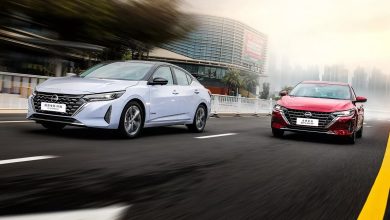Toyota Kick Starts BEV Offensive With New bZ4X Concept

The production bZ4X is set to arrive in 2022 and will be the first of 7 bZ BEVs from Toyota.
While Toyota may have been an early pioneer of electrification with its hybrid Prius, the Japanese auto giant however has not really jumped on the BEV train yet like many of the world’s automakers. Preferring instead to stick to its tried and tested hybrid technology, as well as being one of the few car manufacturers still dabbling in hydrogen FCEVs.
The move to BEVs though was perhaps inevitable for Toyota, as the automaker has recently revealed its bZ4X concept at the ongoing 2021 Shanghai Auto Show. With the bZ supposedly standing for ‘Beyond Zero’, this new battery-electric SUV is set to be the first of 15 fully-electric models by 2025.
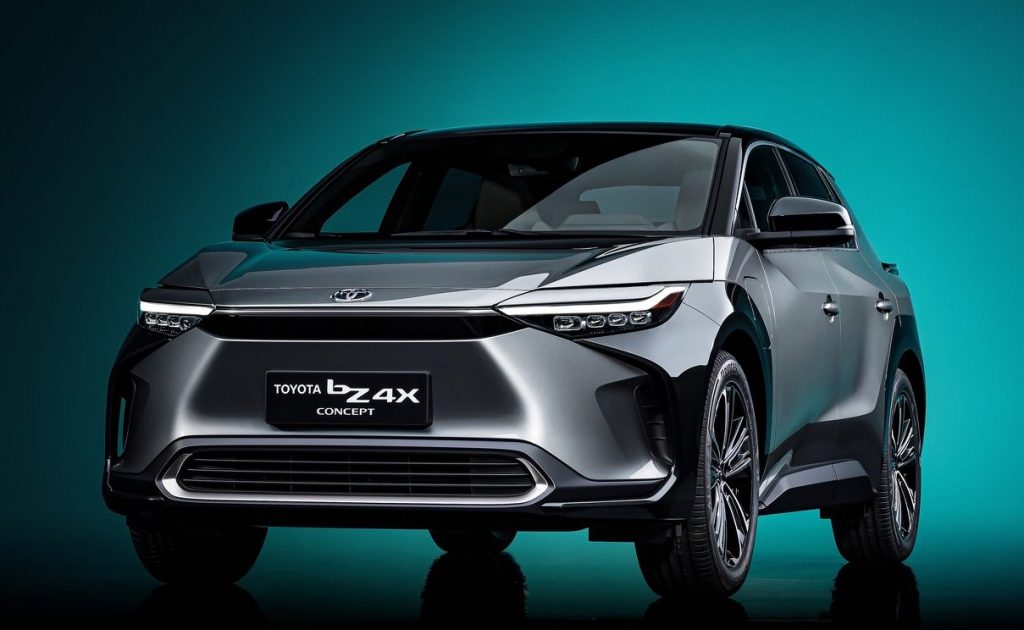

Starting under the skin first with the bZ4X concept, this first of 7 bZ models will be sit on Toyota’s new e-TNGA platform. Codeveloped with Subaru, this e-SUV will apparently be about the same size as the current RAV4 but offer ‘interior space comparable to a D-segment sedan’ courtesy of a long wheelbase and short overhang design.

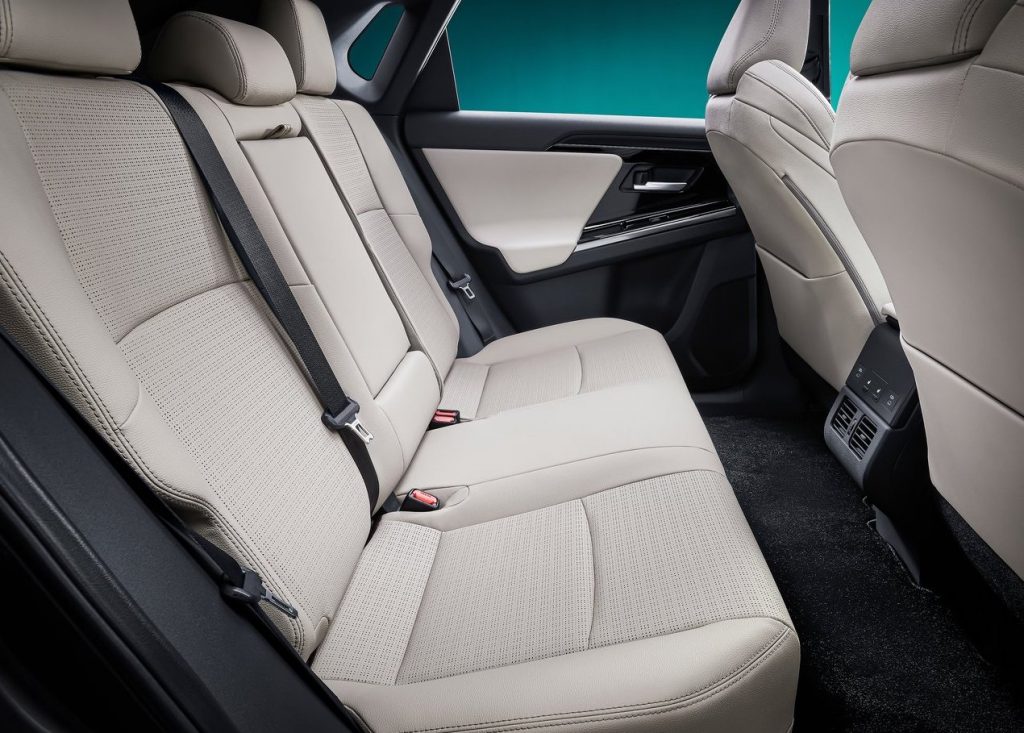
As the 4X in the name suggests too, this new all-electric Toyota will have drive sent to all four wheels through a jointly-developed all-wheel drive system with the aforementioned Subaru. There has been no official word yet on the exact powertrain and battery details, though there are a few interesting mechanical highlights worth mentioning with this new bZ4X.
These highlights include its onboard solar recharging system, that supposedly works in tandem with its ‘regenerative energy systems’ to provide a ‘cruising range that ensures customers not to be inconvenienced in wintertime’. The bZ4X will also feature a steer-by-wire system that is controlled by a yoke-style steering wheel within the cockpit.

Similar to the one recently previewed on the Lexus LF-Z concept, this funky steering wheel (which Toyota apparently claims to wants to retain in the production bZ4X along with a standard wheel design) is fortunately (or unfortunately depending on one’s tastes) the only exciting thing within its cabin. That is because the rest of the interior layout within this new all-electric SUV is pleasingly practical. Featuring a minimalist, low set dashboard topped off with a large central floating touchscreen, a fully digital instrument cluster and a rotary gear selector situated at the head of the floating centre console.

Now moving on to the exterior of the bZ4X meanwhile, this all-electric SUV has undoubtably borrowed more than its fair share of design cues from the current RAV4. Its similarly chunky overall aesthetic though is distinguished by a sleeker front fascia with a closed off grille flanked by slim LED headlights for what Toyota terms to be its new ‘hammerhead’ look for its bZ lineup, and a Mirai-esque rear end design with its full-width LED tail light signature.


To be built in China (partnership with BYD) and Japan, production versions of the bZ4X is set to arrive in Toyota dealerships worldwide some time in mid-2022. This will then lay the foundations for future EVs from the Japanese auto giant that is to come, which is to include a new all-electric pickup truck apparently.
Seeing as this is a collaborative effort with Subaru too, there will undoubtably be a similar offering from the pleiades-branded automaker in the pipeline. Expect to also perhaps see Daihatsu and Suzuki badged variants of the the bZ4X, and maybe (just maybe) a Perodua-based one as well?

PRESS RELEASE: Toyota Motor Corporation (Toyota) announced Toyota bZ, its newly established series of battery electric vehicles (BEVs), in establishment of a full line-up of electrified vehicles, on April 19. At Auto Shanghai, a motor show held in Shanghai, China, Toyota unveiled a concept version of the Toyota bZ4X, which will be the first model in the bZ series.
Contribution to SDGs based on the concept of “home planet”
A challenge on a global scale: achieving carbon neutrality by 2050
In 2018, Toyota announced its intention to transform from an automotive company into a mobility company. Under the common understanding that everyone lives on the same planet, Toyota takes action from the perspective of “home planet,” above and beyond the concepts of “hometown” and “home country” that the automotive industry has long continued its business in. The current working generation is responsible for bequeathing this beautiful home to the next generation, as a place where people can live with peace of mind. Under this perspective, Toyota has the “human-centered” philosophy that technology should contribute to people’s happiness and health.
By utilizing the strength it has cultivated through “monozukuri (manufacturing)”, and by incorporating further technological innovations that expand the possibilities of mobility as it responds to CASE, Toyota seeks to provide services that make freedom of mobility available to all people. The company also aims through its businesses to contribute to the realization of SDGs; among the 17 SDGs, reducing CO2 emissions is a global issue and, in order to achieve this, it is vital that electrification―the “E” of “CASE”―is implemented on a global scale.
Today, countries around the world are declaring their goals in achieving carbon neutrality by 2050. To achieve carbon neutrality in the automotive industry, it is indispensable to integrate energy policies such as renewable energy and charging infrastructure, with industrial policies such as vehicle purchase subsidies, supplier support, and battery recycling systems. It is also necessary to work in collaboration with various stakeholders including governments and industry associations. In the course of our global business activities, Toyota will promote electrification strategies that contribute to reducing CO2 emissions throughout the entire lifecycle of a vehicle, while consulting with governments on how to improve the environment for the promotion of electrification. In addition, we will review and disclose information to confirm our public policy engagement activities are consistent with the long-term goals of the Paris Agreement by the end of this year, and will strive to provide enhanced information disclosure so that as many stakeholders as possible can understand our activities.
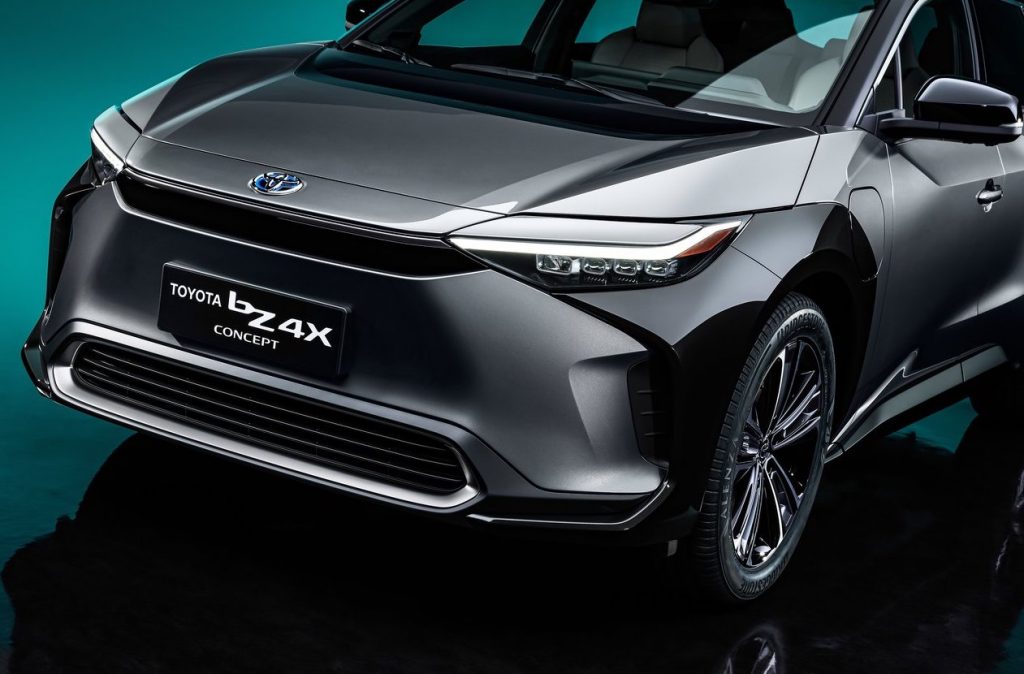
Introducing sustainable vehicles practically; Toyota is establishing a full line-up of electrified vehicles to reduce CO2 emissions with the aim of having 70 electrified models by 2025
Toyota has a long history of CO2 reduction initiatives. In 1993, it launched the G21 project, which sought to propose cars that would be deemed necessary by the world in the 21st century. In 1997, the company launched the world’s first mass-produced hybrid electric vehicle, the Prius. Since then, based on the idea that “eco-friendly vehicles are only meaningful if they achieve widespread use and contribute to CO2 reductions,” or introduce sustainable vehicles practically, Toyota has undertaken to establish a full line-up of electrified vehicles―namely, hybrid electric vehicles (HEVs), plug-in hybrid electric vehicles (PHEVs), battery electric vehicles (BEVs), and fuel cell electric vehicles (FCEVs)―and thereby offer its customers diverse choices. Various factors such as the desired operating environment and cruising range for customers, and the status of development of recharging infrastructure differ according to country and region; it is crucial that, in line with these variables, Toyota offers powertrains that inspire customers to think, “this is easy to use,” and “I want to drive this” and, as a result, leads to reduction of CO2 emissions.
Here are the results of Toyota’s approach in electrification.
- Total cumulative sales of electrified vehicles: over 17 million units (1997-February 2021)
- Total accumulative reductions in CO2 emissions as a result of electrified vehicles: around 140 million tons. (1997-2020)
- Worldwide electrified vehicle sales in 2020: 1.95 million units (23 percent of Toyota’s total sales, or about one in four vehicles, is electrified)
- Between 2010-2019, Toyota electrified vehicles have helped to reduce the average CO2 emission of new vehicles worldwide by approximately 22 percent Toyota’s line-up of electrified vehicles comprises 45 HEVs, four PHEVs, four BEVs, and two FCEVs―a total of 55 diverse models, ranging from passenger cars to commercial vehicles. (as of the end of 2020)
Going forward, Toyota will continue expanding its line-up to cater to the needs of its customers, and will expand the total number of electrified models to around 70 by 2025.
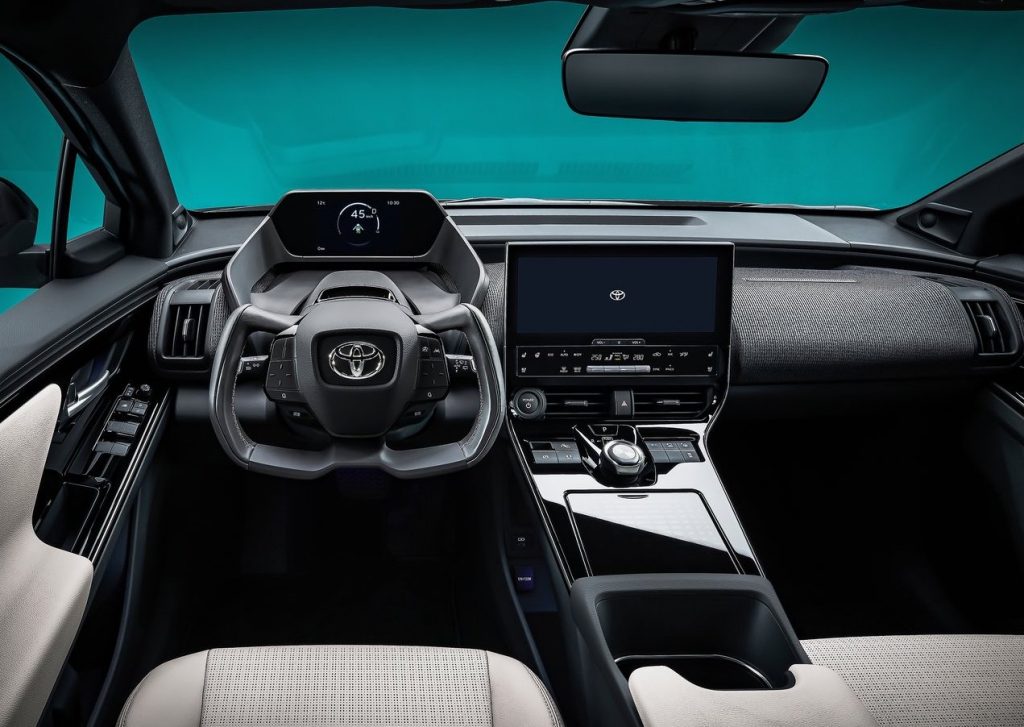
In establishment of a full line-up of electrified vehicles, Toyota will introduce 15 BEVs, including seven new Toyota bZ BEV models by 2025
In establishing a full line-up of electrified vehicles, Toyota has been progressing its plan to introduce 15 BEV models by 2025, including seven new BEV models of the Toyota bZ series. In its development of BEVs, Toyota has taken two distinct approaches based on the idea of utilizing the advantages of BEVs, considering CO2 reductions from LCA.
The first seeks to realize “mobility for all,” with a focus on small-capacity, short-distance, ultra-compact BEVs with establishing new business models such as commercialization of battery reuse and recycling. The Toyota C+pod, which was launched in December 2020, is one example.
In contrast, the new Toyota bZ series of BEVs takes on a “human-centered” approach aimed at widespread use in regions such as China, the U.S., and Europe, where there is significant demand for BEVs, and where there is a large supply of renewable electricity. “bZ” stands for “beyond Zero,” and incorporates the desire to provide customers with value that exceeds mere “zero emissions.” Toyota intends to launch BEVs that will be welcomed by all customers. The Toyota bZ series models will be built on new BEV dedicated platforms with features as follows:
- Practical cruising range that considers the operating environment, so that customers can choose our products with peace of mind
- Open and freestyle interior and uniquely designed exterior utilizing BEV packaging
Development of the Toyota bZ series is based on BEV-dedicated platforms that can be used with multiple variations in terms of size and design. Since it is difficult for Toyota to prepare such a wide range of choices by itself, it is jointly developing the series with partners who boast expertise in various fields. By coordinating with policies that encourage the use of renewable energies, Toyota hopes to expand the range of choice for customers, and contribute to the further reduction of CO2 emissions.

Toyota and Subaru jointly developed the Toyota bZ4X, taking advantage of the two companies’ unique strengths
The Toyota bZ4X is an SUV BEV jointly developed with Toyota’s partner, Subaru. This new vehicle adopts the e-TNGA BEV-dedicated platform that was jointly developed by the two companies; it takes advantage of the strength of Toyota, which boasts expertise in vehicle electrification, and Subaru, which possesses outstanding AWD technologies, and realizes driving performance that is both comfortable and enjoyable. The characteristics of the Toyota bZ4X are outlined below.
- Using a BEV-specific platform, the bZ4X combines a long wheelbase with a short overhang; this results both in a distinctive design, and in an interior space comparable to a D-segment sedan.
- A uniquely shaped steering wheel eliminates the need to change grip when steering, and also contributes to a spacious interior; the vehicle adopts a steer-by-wire system that provides a smooth driving feel aligned with the driver’s intentions.
- The low position of the instrument panel and the location of the meters above the steering wheel serve not only to enhance the vehicle’s sense of space, but also improve visibility and contribute to safe and secure driving.
- The bZ4X adopts a new AWD system jointly developed by Toyota and Subaru; it combines safe and pleasing driving performance―made possible by the unique responsiveness of electrified vehicles―with an impressive off-road performance.
- In addition to the use of regenerative energy systems, the vehicle also adopts a solar recharging system; this cleverly recharges the battery while stationary, and further enhances the unique environmental performance of a BEV. It also provides cruising range that ensures customers not to be inconvenienced in wintertime.
Toyota plans to produce the Toyota bZ4X in Japan and China; it hopes to begin worldwide sales of the model by the middle of 2022.

